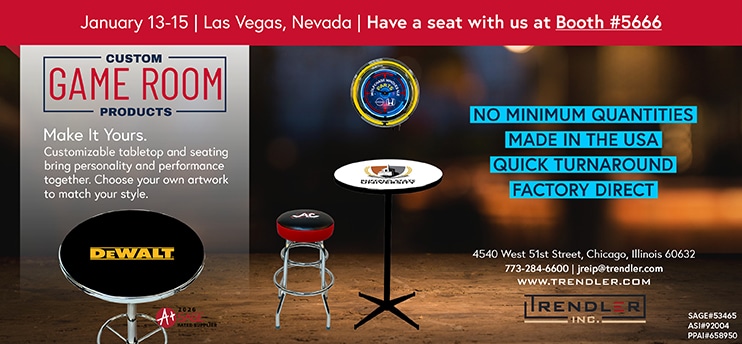Not long ago any account of blue devils clashing with the fighting Irish would have had the makings of a folktale. Today, it’s more likely that this narrative conjures up images of the last Duke-Notre Dame game. How did we go from mythic battle to March Madness? In one word: branding.
Brands symbolize the goodwill garnered by a business and inform consumer purchasing decisions by denoting a level of quality associated with certain goods or services. In the merchandising context, brands also provide consumers with a way to align themselves with their fandom. As such, it comes as no surprise that organizations of all types and sizes actively seek to protect the integrity and value of their brands from misappropriation by others.
In the United States, the primary vehicle for brand protection is trademark law.
- A trademark is a word, name, symbol, device or combination thereof used to identify the source of goods or services (e.g., a “swoosh” on a shoe signifies a product made by Nike).
Consequently, a mark which fails to perform this source-identifying function and instead serves as mere ornamentation is not entitled to protection under the law. Where a party has acquired valid rights to a trademark, it may pursue legal action against another engaged in an infringing use of its mark.
What Qualifies As Trademark Infringement?
Trademark infringement occurs where a later or “junior” user adopts a mark similar enough to a first-in-time or “senior” user’s trademark such that consumers are likely to be confused as to the source or sponsorship of the junior user’s goods.
Among the factors considered by courts in finding that a “likelihood of confusion” exists between two marks are:
- the similarity of the trademarks in terms of their appearance, sound and meaning
- the similarity of the goods and/or services for which the marks are used.
So, the strongest case for trademark infringement generally occurs where a junior user identically reproduces the senior user’s trademark on the same class of goods.
By way of example, and staying with our collegiate theme, Penn State recently prevailed in a federal lawsuit for trademark infringement against Vintage Brand. There, the university challenged Vintage Brand’s use on merchandise of images incorporating one or more of the university’s trademarks.
RELATED: Columbia Sportswear Sues Columbia University For Trademark Infringement
Vintage Brand argued that a number of the Penn State trademarks asserted against it were not entitled to protection on the grounds that they were merely ornamental. However, despite this argument and the fact that the Vintage Brand website specifically disclaimed any affiliation with Penn State, a jury found that Vintage Brand had willfully infringed on Penn State’s trademarks. As a result, Penn State was awarded $28,000 in damages, and the court issued a permanent injunction barring Vintage Brand from using the university’s trademarks going forward.
To cautious merchants in the promotional products industry, this example likely raises a salient concern: What can be done to mitigate against the risk of trademark infringement while still delivering for clients?
Trademark Screening
When adopting a trademark or after having been approached to produce/sell branded apparel for another party, one precautionary measure manufacturers can take is to perform a trademark search. Public state and federal trademark databases may provide insight into the true owner of a mark or flag other confusingly similar marks that pose a risk of infringement.

John Burke
Chair of Intellectual Property Practice Group, Vedder Price
However, the cost of having a trained legal professional analyze the results of such searches may be prohibitively expensive in many contexts. Further, there is no guarantee that any one trademark search will uncover all potentially relevant third-party trademarks, particularly in light of the fact that some enforceable trademarks may not be registered with a public authority.
Liability Shifting
Alternatively, a manufacturer hired by another party to create branded apparel could require the hiring party to indemnify it for any infringement liability arising out of its performance. Like trademark screening, however, the protection offered under this strategy is far from certain. Indeed, a liability-shifting agreement provides little relief in the event the hiring party faces solvency issues at the time indemnification is required.
Licensing
Another option to avoid trademark infringement is to obtain express permission to use a trademark from the trademark owner. Such licenses typically restrict the manner in which a licensee may use a trademark and usually involve a royalty fee or other form of consideration for the license. Many organizations, particularly larger ones, delegate their licensing operations to third-party vendors.

Marko Tupanjac
Associate, Vedder Price
For instance, Penn State and many other universities use the Collegiate Licensing Company. The CLC acts on behalf of these institutions to facilitate agreements, assist with reviewing the quality of a licensee’s merchandise, and help enforce its client’s rights against counterfeiters. While there are costs associated with negotiating and obtaining a license, licenses can avoid much costlier litigation in the future. Accordingly, a license is often the most advisable option for a merchant seeking to sell third-party-branded goods.
Whether one or a combination of the above protection avenues is the right fit for your business depends on a number of factual and legal considerations beyond the scope of this article. Therefore, it is recommended that you consult with an attorney familiar with trademark issues in the context of branded merchandising before settling on an approach.
If you have any questions, please reach out to John Burke at jburke@vedderprice.com or Marko Tupanjac at mtupanjac@vedderprice.com.
Burke is chair of the Intellectual Property Practice Group at Chicago-based law firm Vedder Price and Tupanjac is an associate of the Intellectual Property Practice Group at Vedder Price.


